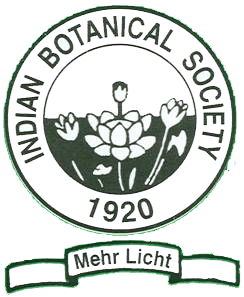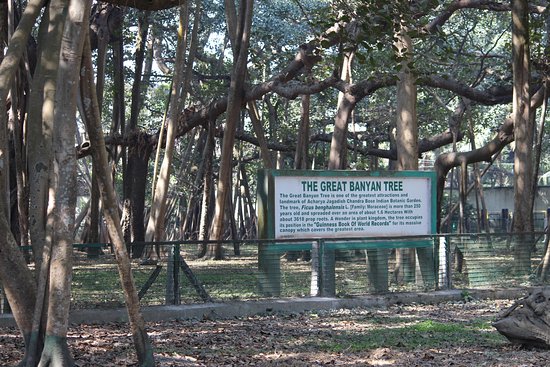|
Indian Botanical Society
The Indian Botanical Society (IBS) is the national learned society for botanists of India. It was founded in 1920. The Society's activities include lectures, symposia, field excursions, field projects and an annual society meeting for exchange of information between botanists working in different areas. Origin The Indian Botanical Society had its inception in a resolution passed by the Botany Section of the Indian Science Congress at the Nagpur meeting in January, 1920. A Committee of organisation was consequently formed to carry this resolution into effect. This Committee consisted of the late Dr. P. Bruhl of the University College of Science, Calcutta, the late Rai Bahadur K. Rangachariar of the Agricultural College, Coimbatore, the late Rai Bahadur Prof. Shiv Ram Kashyap of the Government College, Lahore, the late Prof. Birbal Sahni, then of the Banaras Hindu University, Varanasi, Dr. W. Burns, then of the College of Agriculture, Poona and the late Dr. Winfild Dudgeon of the Ew ... [...More Info...] [...Related Items...] OR: [Wikipedia] [Google] [Baidu] |
Learned Society
A learned society (; also learned academy, scholarly society, or academic association) is an organization that exists to promote an discipline (academia), academic discipline, profession, or a group of related disciplines such as the arts and science. Membership may be open to all, may require possession of some qualification, or may be an honour conferred by election. Most learned societies are non-profit organizations, and many are professional associations. Their activities typically include holding regular academic conference, conferences for the presentation and discussion of new research results and publishing or sponsoring academic journals in their discipline. Some also act as Professional association, professional bodies, regulating the activities of their members in the public interest or the collective interest of the membership. History Some of the oldest learned societies are the Académie des Jeux floraux (founded 1323), the Sodalitas Litterarum Vistulana (founded ... [...More Info...] [...Related Items...] OR: [Wikipedia] [Google] [Baidu] |
Botany
Botany, also called , plant biology or phytology, is the science of plant life and a branch of biology. A botanist, plant scientist or phytologist is a scientist who specialises in this field. The term "botany" comes from the Ancient Greek word (''botanē'') meaning " pasture", " herbs" "grass", or " fodder"; is in turn derived from (), "to feed" or "to graze". Traditionally, botany has also included the study of fungi and algae by mycologists and phycologists respectively, with the study of these three groups of organisms remaining within the sphere of interest of the International Botanical Congress. Nowadays, botanists (in the strict sense) study approximately 410,000 species of land plants of which some 391,000 species are vascular plants (including approximately 369,000 species of flowering plants), and approximately 20,000 are bryophytes. Botany originated in prehistory as herbalism with the efforts of early humans to identify – and later cultivate – ed ... [...More Info...] [...Related Items...] OR: [Wikipedia] [Google] [Baidu] |
Indian Science Congress
Indian Science Congress Association(ISCA) is a premier scientific organisation of India with headquarters at Kolkata, West Bengal. The association started in the year 1914 in Kolkata and it meets annually in the first week of January. It has a membership of more than 30,000 scientists. The first Indian Science Congress was held in 1914 at the Asiatic Society in Calcutta. After pseudoscientific speeches at the 2019 Indian Science Congress, the congress has established a policy that requires speakers at future conferences to be vetted and scrutinizes the content of their talks. Several prominent Indian and foreign scientists, including Nobel laureates, attend and speak in the congress. Genesis The Indian Science Congress Association (ISCA) owes its origin to the foresight and initiative of two British chemists, namely, Professor J. L. Simonsen and Professor P. S. MacMahon. It occurred to them that scientific research in India might be stimulated if an annual meeting of resea ... [...More Info...] [...Related Items...] OR: [Wikipedia] [Google] [Baidu] |
Paul Johannes Brühl
Paul Johannes Brühl (25 February 1855 – 1935) was a German-origin professor of botany who worked in India, mainly at the Presidency College, Calcutta. Brühl was born in Saxony to Michael Brühl and was educated in Germany and received a scholarship to travel and collect botanical specimens through Europe. He then walked across Europe into Asia Minor. He taught briefly in Constantinople and reached India in 1881 and taught science at the Rajshahi College in 1882. He married Annie Betts Fox in 1883 and through the influence of Sir George King, he joined the Bengal Engineering College in 1887 where he taught chemistry, geology, and agriculture. He was popular and known for his sympathetic handling of students. He retired from the engineering college in 1912 and worked briefly at the Indian Institute of Science in Bangalore. In 1913 he was invited by Sir Ashutosh Mukherjee to serve as registrar for Calcutta University. He later served as a professor of botany. He worked on control o ... [...More Info...] [...Related Items...] OR: [Wikipedia] [Google] [Baidu] |
Maharaja Sayajirao University Of Baroda
The Maharaja Sayajirao University of Baroda, formerly Baroda College, is a public university in the city of Vadodara, in Gujarat state, India. Originally established as a college in 1881, it became a university in 1949 after the independence of the country. It was later renamed after its benefactor Maharaja Sayajirao Gaekwad III, the former ruler of Baroda State. The university offers undergraduate, post-graduate, and doctoral programs. It houses 89 departments spread over 6 campuses (2 rural and 4 urban) covering 275 acres of land. History The university has its origins in the Baroda College, established in 1881 by Baroda State. The main building, which houses the Faculty of Arts, was designed by Robert Fellowes Chisholm in Indo-Saracenic architecture style, in a fusion of Indian and Byzantine arches and domes in brick and polychrome stone. The main dome on the convocation hall was modelled after the great dome of the Gol Gumbaz in Bijapur. Pratap Singh Gaekwad of Baroda (1 ... [...More Info...] [...Related Items...] OR: [Wikipedia] [Google] [Baidu] |
Botanical Survey Of India
Botanical Survey of India (BSI) located in Kolkata, West Bengal, India. It was founded on 13 February 1890, is Government of India Ministry of Environment, Forest and Climate Change's organization for survey, research and conservation of plant wealth of India, flora and endangered species of India, including by collecting and maintaining germplasm and gene bank of endangered, patent and vulnerable plant species. History BSI was formally instituted by East India Company (EIC) on 13 February 1890Botanical Survey of India (BSI) "History", Botanical Survey of India. under the direction of Sir who became first ex-officio director, earlier he had bee ... [...More Info...] [...Related Items...] OR: [Wikipedia] [Google] [Baidu] |
Indian Association For Angiosperm Taxonomy
The Indian Association for Angiosperm Taxonomy (IAAT) was established in 1990. The IAAT is headquartered at the Department of Botany, Calicut University, Kozhikode, India. The IAAT is affiliated to the International Association for Plant Taxonomy. It promotes Angiosperm taxonomy in India and acts as a gathering organisation for Angiosperm taxonomists. Publication The IAAT publishes a journal ''Rheedea'' (named after Hendrik van Rheede Hendrik Adriaan van Rheede tot Drakenstein (Amsterdam, 13 April 1636 – at sea, 15 December 1691) was a military man and a colonial administrator of the Dutch East India Company and naturalist. Between 1669 and 1676 he served as a governor of D ...). References External links IAAT websiteIAPT''Index Nominum Genericorum'' {{authority control Scientific organisations based in India Plant taxonomy Botanical societies Flora of India (region) International scientific organizations Scientific organizations established in 1990 1990 establishm ... [...More Info...] [...Related Items...] OR: [Wikipedia] [Google] [Baidu] |
Flora Of India
The flora of India is one of the richest in the world due to the wide range of climate, topology and habitat in the country. There are estimated to be over 18,000 species of flowering plants in India, which constitute some 6-7 percent of the total plant species in the world. India is home to more than 50,000 species of plants, including a variety of endemics. The use of plants as a source of medicines has been an integral part of life in India from the earliest times. There are more than 3000 Indian plant species officially documented as possessing into eight main floristic regions : Western Himalayas, Eastern Himalayas, Assam, Indus plain, Ganges plain, the Deccan, Malabar and the Andaman Islands. Forests and wildlife resources In 1992, around 7,43,534 km2 of land in the country was under forests of which 92 percent belongs to the government. Only 22.7 percent is forested compared to the recommended 33 percent of the National Forest Policy Resolution 1952. The majo ... [...More Info...] [...Related Items...] OR: [Wikipedia] [Google] [Baidu] |
Indian Botanic Garden
The Acharya Jagadish Chandra Bose Indian Botanic Garden, previously known as Indian Botanic Garden and the Calcutta Botanic Garden, is situated in Shibpur, Howrah near Kolkata. They are commonly known as the Calcutta Botanical Garden and previously as the Royal Botanic Garden, Calcutta. The gardens exhibit a wide variety of rare plants and a total collection of over 12,000 specimens spread over 109 hectares. It is under Botanical Survey of India (BSI) of Ministry of Environment and Forests, Government of India. History The gardens were founded in 1787 by Colonel Robert Kyd, an army officer of the East India Company, primarily for the purpose of identifying new plants of commercial value, such as teak, and growing spices for trade. Joseph Dalton Hooker says of this Botanical Garden that "Amongst its greatest triumphs may be considered the introduction of the tea-plant from China ... the establishment of the tea-trade in the Himalaya and Assam is almost entirely the work of the ... [...More Info...] [...Related Items...] OR: [Wikipedia] [Google] [Baidu] |






